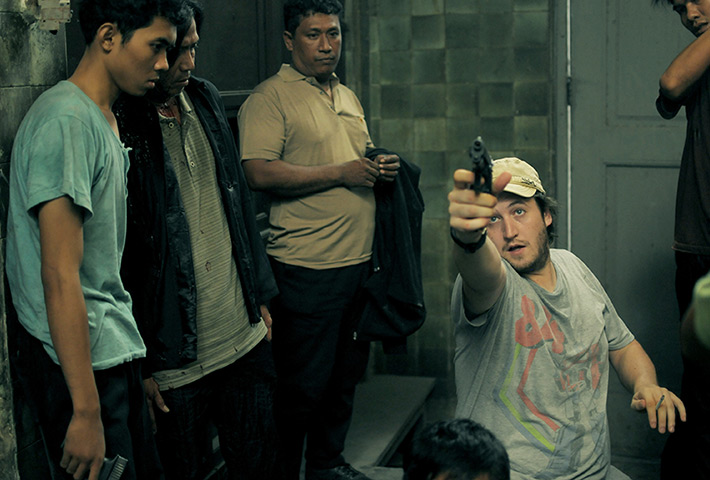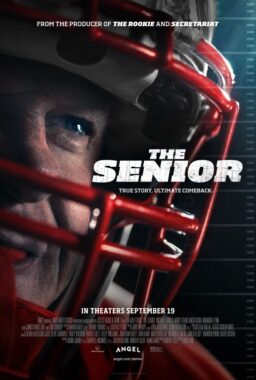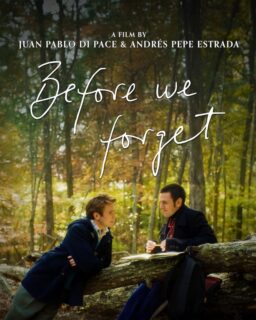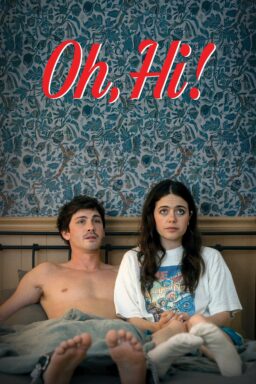Gareth Evans shook the action movie scene with the 2011
release of the intense “The Raid: Redemption“. At that time, he was already
deep into the world of “The Raid 2: Berandal”. In fact, when the first film
played at Toronto, it was just “The Raid” but the title was quickly expanded
before theatrical release because, well, we had a franchise brewing. With part
two of this saga, Evans and his star/choreographer Iko Uwais have completely
expanded on the intimate setting of the first movie to present a massive,
detailed crime epic about warring crime bosses and the undercover cop caught in
the middle. The writer/director and his star sat down with us to
talk about the art of controlled chaos, the sense of danger, avoiding the sophomore
slump, and what they’ll say when Hollywood calls.
In the prison yard
scene, you have to make it look spontaneous but, of course, it can’t actually
be. How do you work to make such a chaotic action scene look like it’s
happening instinctually when anyone who thinks about it will know it’s not?
Gareth Evans: A large part of it comes from being very, very specific in
terms of the choreography. It was a big scene—a lot of different people, a lot
of opponents. It’s never purely focused on one person. There are prison guards
and other people. So what we decided to do was the way we’d structure it is
that we would design just Iko’s section of the fight. We’d get a clear path of
his section. Then we worked Uco’s section of the fight. And we got a clear path
of that. Then after that, we’d go off and say, “Prison guards and prisoners.
Two on one—one prison guard, two prisoners. Over here—two prison guards, one
prisoner. Over here—one on one.” And so on. There were just a bunch of
different smaller things. Maybe this guy is hitting with a stick. This guy gets
stabbed in the throat by this guy running in. We choreograph EVERYTHING. So
when we come up with all of those individual moments and go to a white board
and write down the structure for it. Especially for that scene since there was
so much chaos. It’s weird you’d say chaos because we’d write it down as “Chaos,
Part 1,” “Chaos, Part 2”. That’s what we wrote. (Laughs). We’d label each
moment. After that logistical nightmare is done then we start shooting a video
storyboard for it. We shoot this whole video storyboard where we figure out
every single shot and every single edit as it would be in the final film.

You’re editing not
just as you’re filming but as you’re choreographing?
GE: Yes. Pretty much. We have it down before we’ve even shot
them. Just to make sure that we get them. It’s an essential part of the
process. We’re not as skilled as Hong Kong action directors. They can go off
and do that shit and improvise on set. I’ve heard stories of Jackie Chan taking
a walk around [the set] to figure out what he wants to do. That’s incredible.
We don’t have that yet.
You also have a more
heightened sense of danger in a lot of your scenes.
GE: When it comes to that though—the big stunts… To be honest,
for all of the stunts, we find safe ways of performing them. We find a camera
trick or an edit trick. A lot of the stunts we do, we present them almost as if
they’re a gonzo shot. You’re witnessing something that’s really really
dangerous and the guy could have gotten killed. When it’s THAT dangerous, it’s
always shot really really safe. When there’s a top shot and you see the guy
crash the car and fly through the windscreen and hit the bonnet? That’s three
shots—crash, glass flying, and pulling the stunt guy who’s on a sling onto
the bonnet. It’s a combination that makes it look like one flow.

That kind of stuff I
think we’re used to. I think someone swinging hammers around on a subway train…
GE: (Laughs). Well, yeah. Obviously, rubber hammers. (Laughs.)
To be honest, that’s one of the safest scenes. Everything we use in terms of
weapons is safe because they’re foam. Everything we do is heightened in terms
of danger because of claustrophobia. That’s how we get that heightened sense of
fear in the audience. If there’s a big open space, you can run. If you’re stuck
in a car? You have no escape plan. It becomes more immediate. The taxi attack is
a great example of that. You feel it. “How the f**k is he going to get out of
it?”
The subway attack
intercut with the other two attacks going in that moment is truly remarkable.
GE: I was really happy with that because of score. I loved the
score. That brought it together. I cut the scene before we had music. I had no
idea what it was going to sound like, not even a reference file. We were going
to use live source material from the performance, so we didn’t know what we
were going to do there. So I had to imagine a rhythm to cut in and out of. I
love what he did because it’s all about percussive elements and each element
being unique to each character. You know who you would watching from an audio
cue as well as visual. And these creepy broken guitar sounds all brought it
together.
Iko, how do you as an
actor maintain a real sense of danger in your character even when you as a
fight choreographer know there isn’t any?
Iko Uwais: It’s choreographed but also mixed with improv when needed.
It’s all locked-down and pre-designed and I know from the beginning to the end
where the punches are coming from but having to remember that just because you
know the choreography don’t move your body already [in anticipation]. Feed off
it. If we’re facing off against each other, if you swing and then I block, I
would look for the next strike and it’s that little look that will tell the
audience that you’re anticipating it but you don’t know where it’s coming from
until he swings. That’s a part of the process—put those little looks in and
gestures that give the audience the perception that it is all spontaneous and a
reflex instead of something that’s programmed.

We’ve seen enough bad
part twos that there’s a phrase for it. How do you avoid the sophomore slump?
GE: Basically, my whole thing was to make something that wasn’t
a carbon copy of the first one. If we did “The Raid 2” as 16 floors instead of
15 floors then the film would have f**king sucked. We already exhausted our
choreography ideas in the first film as to what we could do in a single
location. To me, it was NEVER something of interest to do that again. I would get
pitched “There are these guys and they’re trapped in this position; this
location.” And as soon as I’d hear that, I’d be “OK, I don’t know what to do
that’s new for that. I’ve done it once because it was fresh but I can’t do that
again.” There was pressure this time because we had to take it outside of that
building and expand it but, also, we lost the element of surprise. The first
one—no one knew what it was. When we premiered at Toronto, NO ONE knew what it
was even until the screening started. We hadn’t put a trailer out. We hadn’t
put anything out at all. We hadn’t put a single piece of footage out. Now, it’s
expectations and pressure, and we had that ourselves. We’d be watching a fight
scene and we’d be like, “Is this as good as that corridor fight?” You start to
wonder. You start to second guess yourself. And that’s the worst thing you can
do. Stop thinking about that. Stop worrying about that. Do what we’re doing.
Lay it out. The way we approached it is we maintained the same creative working
space. There was NO interference from outside. No one was allowed to tell us
what the film was going to be or what it was going to be about or how it was
going to be executed. That was our gut instinct. To be able to have that
creative freedom was a huge, huge thing.
To go from such an
intimate piece to a sprawling crime epic—how is that leap made? You didn’t just
choose not to do “16 floors”, you made a different genre of film really. Why
such a DRASTIC turn?
GE: I wanted to explore something different. “Merantau” was my
attempt to infuse drama with martial arts. It was a bit of a mixed bag for me.
I’m super proud of it but I can see the strain of some things in there too. It
was our first film. When it came to “The Raid,” I was so frustrated…to go back,
the script for “The Raid 2” existed before “The Raid 1.” When it came to “The
Raid 1,” it was out of frustration because I hadn’t made it a film in two
years. “F**k it, I’m going to throw every genre I can think of and play with
it. Can I get good at this style of genre?” For me, “The Raid” was survival
horror. It had thriller elements, tension elements, gunfire, martial arts, and
action—throw all of those things together and see if they can fit well. All of
those things played a part. But with the sequel, I wanted to branch out and try
a different genre. I don’t want to survival horror again. I want to do an
American crime gangster movie. I want to do a Yakuza movie. And I want to fuse
it through an Indonesian sensibility.
What were those
filmic inspirations for this one?
GE: I watched “Donnie Brasco“, “Infernal Affairs“, “The Departed“.
I’ve been a huge fan of gangster films for a long time—”GoodFellas“, “Casino“, “The
Godfather”, “Once Upon a Time in America”, “Scarface”. They were all, to a
certain degree, influential. And then when it came to the Yakuza side, a lot of
Takeshi Kitano stuff. The stillness of it. Even down to the set design. And
there was a certain comic book style to Hammer Girl and Baseball Bat Man. Even
the knives guy doesn’t say a word. To bring that in without it feeling like we’re
stretching the boundaries of reality too much. They’re pop icons but they feel
like they belong in that world.

“The Raid 3”—Where we
at?
GE: I absolutely want to do it. Definitely want to make it. It
won’t be for the next couple years yet. I want to take a break from the franchise
and do something else first. But I will come back. If “The Raid 2” was two
hours after “The Raid 1” finished, “The Raid 3” is three hours before “The Raid
2” finishes. There’s a scene there were a group of people make a certain
decision to do something and it will branch from there.
Finally, Hollywood
calls, Tom Cruise calls, and says, “Gareth, I want you to direct ‘Mission:
Impossible 5’, and, Iko, I want you to co-star.” Are you guys in?
GE: For me, my whole thing is that if it’s a franchise, I would
rather get on in the first part. By the time you reach part four or five, the
whole visual landscape is pre-designed and you can’t do much with it then.
Do a Bond movie. You
can redesign those.
GE: To a certain degree, yeah. (Laughs.) It’s hard to say. When
it’s like a superhero movie—Marvel films, for example—those things have such a
defined look to them. And I don’t know if I can shoot PG-13 action. The way
that I shoot action is to show everything. It doesn’t mean blood and stabbing
but the connection of a punch. And that’s a big no-no for PG-13. I’d be going
against all of my instincts. I’d be in the edit room depressed. “Can’t we make
f**king Superman an R or an NC-17, please?!?!”












